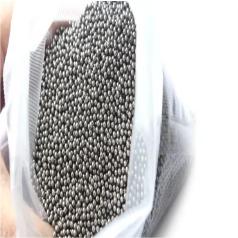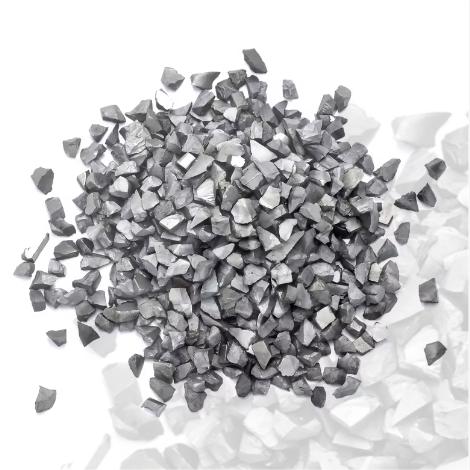**Title:** The Unplatable Truth: Metals That Defy Electroplating
(What Metals Cannot Be Plated)
**What Metals Say “No” to a Shiny Coat?**
Plating sounds simple. Dunk metal, add electricity, get a shiny, protective layer. But it’s not magic. Some metals stubbornly refuse to play nice. Think of plating like trying to paint a greasy surface. If the base metal doesn’t bond well with the plating solution or the intended coating, the result is a mess. Metals like magnesium are super reactive. They fizz and corrode in common plating baths before any coating sticks. Others, like tungsten, are incredibly hard and have wildly different expansion rates than common plating metals. Imagine trying to glue a thin sheet of plastic onto a hot stove element – it just won’t stay put. Then there’s titanium. It forms a tough oxide layer instantly in air or water. This layer acts like an impenetrable shield, stopping the plating from bonding directly to the pure titanium underneath. So, while steel, copper, and brass readily accept plating, others are the rebels of the metal world.
**Why Won’t These Metals Cooperate?**
The reasons boil down to chemistry and physics. First, reactivity. Metals like magnesium and the alkali metals (sodium, potassium) react violently with water or acids. Standard plating baths are often acidic or contain water. Plating these metals is like trying to build a sandcastle during a tsunami. The base metal dissolves faster than any coating forms. Second, oxide layers. Aluminum and titanium are champions here. Exposure to air creates an ultra-thin, incredibly tough oxide skin. This skin prevents the plating solution from making proper electrical contact or bonding chemically with the underlying metal. It’s a built-in raincoat. Third, thermal expansion mismatch. Tungsten and molybdenum expand very little when heated. Common plating metals like nickel or copper expand significantly. Plating these creates massive stress as temperatures change. The coating cracks or peels off like old paint. Finally, poor adhesion. Some metals just don’t form strong chemical bonds with common plating metals. Lead, for instance, has a very low surface energy. It’s like trying to stick tape to a dusty surface; nothing wants to grip properly.
**How Do We Plate the “Unplatable” Anyway?**
Science pushes boundaries. Plating the difficult metals often needs extreme measures. For reactive metals like magnesium, special baths exist. These are non-aqueous solutions, using organic chemicals instead of water. Think of it like plating in oil instead of water. The process is complex, expensive, and requires strict control. For oxide formers like aluminum and titanium, brute force is needed first. This means aggressive pre-treatment. Aluminum might undergo zincating – a process where it’s dipped in a zinc solution to deposit a thin, reactive zinc layer the actual plating can bond to. Titanium often needs strong acid etching or even mechanical abrasion under controlled conditions to briefly disrupt that oxide layer before plating. Sometimes, an intermediate layer is key. Plating a thin layer of nickel (using special methods like electroless nickel) onto tungsten first provides a surface that subsequent plating can adhere to reliably. These methods work, but they are far from the straightforward electroplating used for copper or steel. They demand expertise and careful handling.
**Applications Where This Knowledge Matters Most**
Knowing which metals resist plating is vital in many industries. Aerospace uses titanium and high-strength aluminum alloys extensively. These metals are lightweight and strong. They often need wear-resistant or conductive coatings on specific surfaces. Using the wrong pre-treatment means coatings flake off in flight. That’s bad. Medical implants, especially titanium bone screws or plates, sometimes require specific biocompatible coatings. Ensuring perfect adhesion is critical inside the human body. Electronics rely on plating for conductivity and solderability. Using aluminum connectors without proper plating prep leads to connection failures. Even everyday items suffer. That cheap aluminum garden ornament with flaking “chrome”? Likely a plating failure on untreated aluminum. In high-temperature environments, like rocket nozzles using tungsten, any coating must withstand immense thermal cycling without delaminating. Choosing the right base metal *and* the right plating process together makes the product reliable.
**FAQs: Unplatable Metals Demystified**
1. **Can aluminum ever be plated?** Yes, but it needs special prep. Processes like zincating or anodizing (creating a porous oxide layer) provide a surface plating can grip. Direct plating rarely works.
2. **Why does “chrome” peel off some car parts?** Often, the part is aluminum or cheap zinc alloy. If the plating process skips proper cleaning or pre-treatment steps, adhesion fails. Moisture gets under the coating, causing blisters and peeling.
3. **Is titanium plating impossible?** Not impossible, just difficult. It requires aggressive surface activation (like acid etching or sandblasting in a vacuum) immediately before plating. Electroless nickel is a common starting layer.
4. **Can I plate magnesium at home safely?** Strongly not recommended. Standard plating solutions react violently with magnesium, producing flammable hydrogen gas and hazardous fumes. Specialized, non-water-based baths are needed, handled only by professionals.
5. **If a metal can’t be plated easily, how is it protected?** Alternatives exist. Anodizing (for aluminum, titanium) builds a thick, hard oxide layer. Powder coating applies a durable polymer finish. Painting or specialized chemical conversion coatings (like chromating) offer corrosion protection without electroplating.
6. **Does “stainless” steel mean it doesn’t need plating?** Not always. Stainless steel resists corrosion but can still benefit from plating. Plating might be added for enhanced wear resistance, better electrical conductivity, solderability, or just a different aesthetic look like gold or black nickel.
(What Metals Cannot Be Plated)
7. **Is lead really unplatable?** Lead *can* be plated, but it’s tricky due to its softness and low surface energy. It’s more common to plate *onto* lead (like in lead-acid battery terminals) using specific processes. Lead itself isn’t a common plating target for decorative or protective finishes elsewhere. Always consult plating experts for challenging materials.
Inquiry us
if you want to want to know more, please feel free to contact us.


